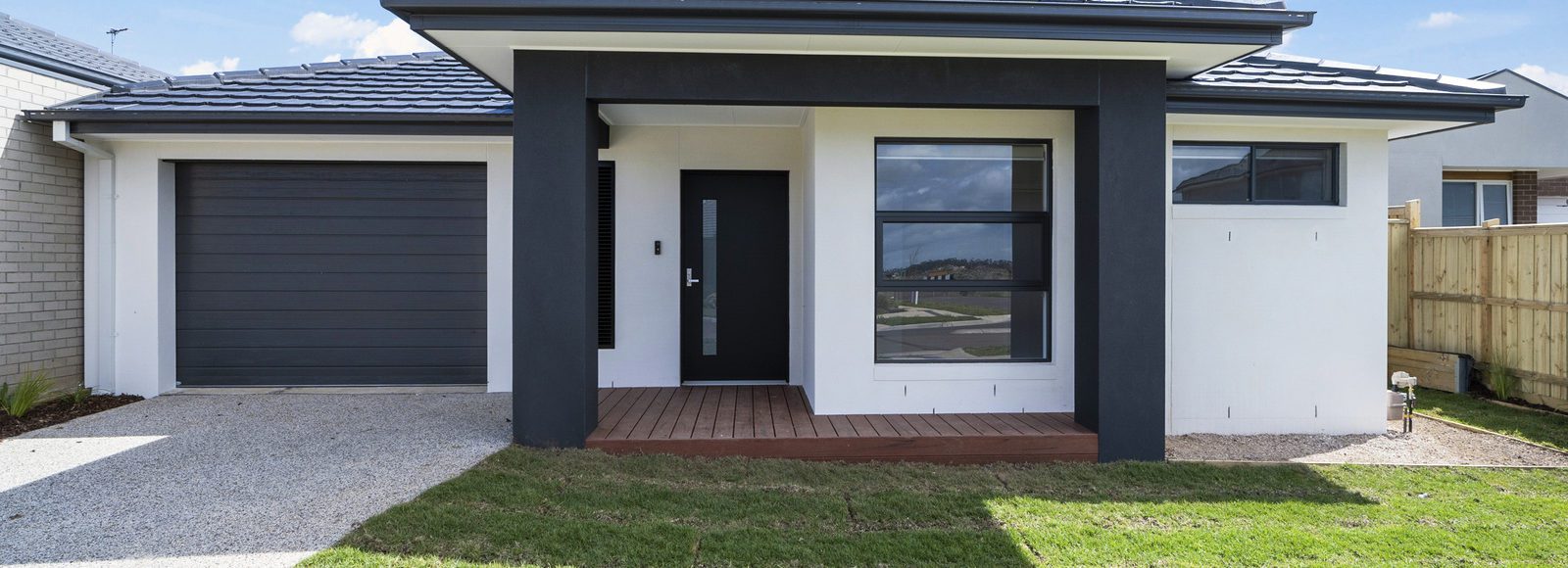When we talk about building NDIS housing, we mean building Specialist Disability Accommodation (SDA) housing.
Building an SDA home can be much easier and cost effective than to trying to retrofit an existing property to SDA standards.
If you are ready to get building NDIS housing or SDA housing, here is our handy checklist of the steps to take, assuming you are working with the expert SDA team at Home in Place.
Step 1. Discuss your SDA housing plans with a financial planner, accountant and SDA lender.
Before you start to build NDIS housing, it is important to get expert advice on the financial aspects of building NDIS housing. While becoming more common, not all banks or lenders will finance NDIS housing. There can be different requirements to other investment loans including the required loan to valuation (LVR) ratios.
There is not always constant cashflow with SDA payments and there can be longer lead times to bring in tenants and rent than with other types of housing.
Read our Guide to Investing in NDIS Housing to gain a better understanding of the NDIS and SDA before your meetings.
Step 2. Research the SDA categories of build as well as other SDA requirements and guidelines.
There are four SDA building types which meet NDIS building requirements.
- Improved Liveability – for people with sensory, intellectual or cognitive impairments. Must meet Liveable Housing Australia ‘Silver’ level requirements.
- Fully Accessible – for people with a disability who have lots of physical challenges. Must meet the Liveable Housing Australia ‘Platinum’ level requirements.
- Robust – strong and durable disability housing that provides a safe place for residents with complex and challenging behaviours, and for other people. Must meet Liveable Housing Australia ‘Silver’ level requirements.
- High Support – for people with a disability who need very high levels of support. Must meet the Liveable Housing Australia ‘Platinum’ level requirements.
All NDIS housing must meet the NDIS SDA Design Standard and be enrolled with the National Disability Insurance Agency (NDIA) before it can be rented to an NDIS participant using their SDA funding. The standard tells you how to build NDIS housing.
Step 3. Research current supply and demand for SDA housing
This step will help to minimise the risk of prolonged vacancies.
Remember that only about 6% of NIDIS participants qualify for SDA funding in their NDIS plan. SDA housing is for people with very high levels of disability and support needs. There is currently an overall shortfall of NDIS housing but there is an oversupply for some categories in some areas.
Use the NDIS website’s useful SDA demand tools. Home in Place will also share its intelligence on market trends and market demand.
Even better, our team will match you with a resident on our lists who is looking for someone to build a certain type of NDIS housing.
Step 4. Determine the SDA category of NDIS housing you wish to build
When building an NDIS house you will need to determine which category of SDA housing you wish to build because each has different requirements and NDIS building standards.
Step 5. Design your NDIS housing
Appoint an SDA specialist architect or a building designer or consultant to develop the concept and schematic designs for your SDA housing.
Step 6. Appoint an SDA property and tenancy manager
Forward those SDA housing designs to Home in Place and request a property and tenancy management fee proposal. Home in Place is an accredited and experienced provider of comprehensive and holistic SDA property and tenancy management. Getting an SDA property and tenancy manager on board before you build gives time for them to help you to market the property and secure a tenant to be ready to move in as quickly as possible after the home is built. This helps to minimise the vacancy rate and maximise your income.
Step 7. Get approval to build your NDIS housing
You will usually need to apply to the local Council or similar body to get approval to build your SDA housing.
Step 8. Select a builder
Prepare tender and construction documentation to obtain quotes from builders. It is always a good idea to get more than one quote. Ask about their experience in building NDIS housing. If you are a builder, prepare your construction plan.
Step 9. Obtain Design Provisional Certification
Get an approved SDA building consultant to issue a Design Provisional Certification.
Step 10. Construct your NDIS housing
Now the exciting part begins as you watch your NDIS housing rise-up from the ground.
Step 11. Get As-Built certification
You will need an NDIS/SDA approved building consultant to undertake as-built inspection(s) to certify that your NDIS housing has been correctly built to guidelines and standards. Once satisfied, they will issue a final As-Built Certificate.
Step 12. Enrol the dwelling with the National Disability Insurance Agency.
To rent SDA housing, you must have SDA funding within your NDIS plan. Home in Place is a registered SDA provider and will enrol your dwelling through the NDIS Portal. This will also allow Home in Place to claim SDA payments for you.
Step 13. Hand over the property to Home in Place
Your Home in Place SDA team will then be able to work with providers, families and supports to identify suitable residents for the property.
We will manage rental payments for RRC and SDA claiming for you and provide monthly statements.
Home in Place will manage the property and individual tenancies just like a normal real estate. We will also ensure your property is maintained properly and in line with standards through routine inspections and our 24 hour maintenance support service.
For more information about building or investing in SDA housing call Home in Place on 1300 333 733 or contact us here.






